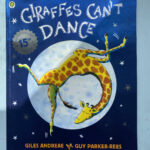The concert weekend I had eagerly anticipated, featuring Pure Prairie League, Poco, and Orleans, was unfortunately sidelined by the realities of the COVID-19 pandemic in May 2020. Like many music enthusiasts, I turned to online videos to fill the void, particularly drawn to Orleans’ rendition of the captivating King Harvest classic, “Dancing in the Moonlight.”
This Sherman Kelly composition has long resonated with me as a quintessential tune of the 1970s. Its initial release on July 9, 1972, propelled King Harvest to significant chart success, reaching impressive positions on Cash Box, Billboard Hot 100, and Billboard Easy Listening charts.
While browsing YouTube comments, a surprising discovery emerged beneath an Orleans performance of “Dancing in the Moonlight”: a comment from Sherman Kelly himself, posted just five months prior.
This revelation sparked an immediate thought. As someone deeply fascinated by the narratives behind iconic songs and albums – the very essence of my “Vinyl Dialogues” series – I wondered: Could I connect with Sherman Kelly and delve into the captivating genesis of “Dancing in the Moonlight”?
The answer was a resounding yes, and the story behind this beloved song is more extraordinary than you might imagine.
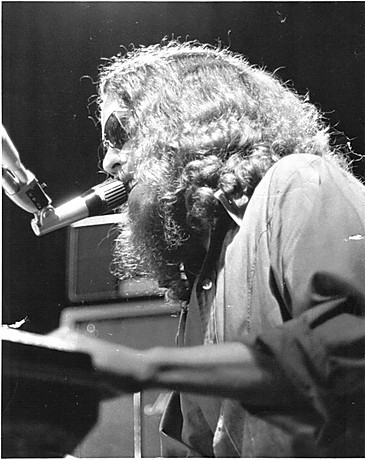
Sherman Kelly onstage in the 1970s. (Photo courtesy of Sherman Kelly)
In 1969, Sherman Kelly and friends operated a nightclub in St. Thomas, Virgin Islands. An impulsive decision led them to charter a 65-foot yacht for a day trip to St. Croix. Unbeknownst to Kelly, he was susceptible to seasickness, a condition that severely afflicted him and his girlfriend during the voyage.
Upon reaching St. Croix, the group disembarked in search of dinner. However, Kelly and his girlfriend, still battling seasickness, had lost their appetites. The others procured food and planned to return to the yacht for the night. Kelly and his girlfriend, observing the boat’s mast swaying in the harbor, decided to avoid further seasickness and seek lodging in town.
A crucial oversight complicated matters: Kelly’s wallet remained on the yacht, leaving him without funds for a hotel. They approached a small inn, explained their predicament, and offered to settle the bill in the morning upon retrieving his wallet.
“And he said, ‘Sure, you can stay here if your girlfriend will sleep with me,'” Kelly recounted in a telephone interview from his Finger Lakes, New York home.
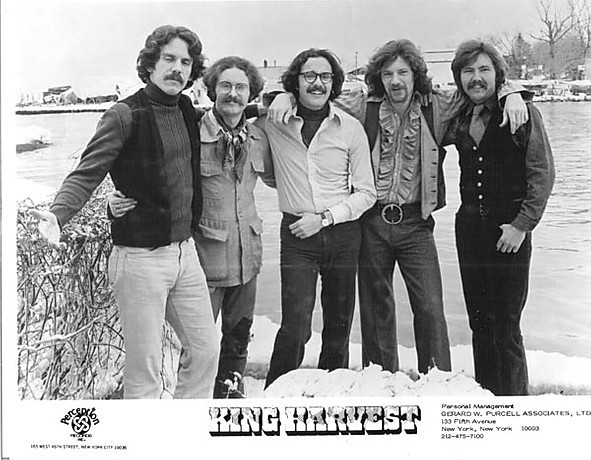
King Harvest in 1972. (Photo courtesy of Sherman Kelly)
Rejected by a second inn as well, Kelly’s girlfriend proposed an alternative: “It’s a beautiful night. Why don’t we just stretch out on the beach?”
“So we did,” Kelly stated. “And that’s all I remember very clearly.”
The subsequent events were reconstructed from fragmented memories and accounts from others. While sleeping on the beach, Kelly and his girlfriend became victims of a brutal assault by a St. Croix street gang. Five gang members, wielding baseball bats, severely beat Kelly. His girlfriend was subjected to rape by the gang leader, with the others waiting their turn. However, she later reported that Kelly regained consciousness during the attack and fought back, creating enough disturbance to deter the assailants.
In a semi-conscious state, the couple followed shoreline lights, eventually reaching the only hospital in St. Croix. They were believed to be among the early victims of the notorious Fountain Valley Gang, who in 1972 perpetrated a mass murder of tourists, devastating St. Croix’s tourism industry for years.
“I woke up to the sound of my hospital roommate screaming in pain. Finally the screaming stopped and I heard two doctors talking about him. ‘That’s it, he’s gone,’ said one doctor about the other patient. ‘What about him, you think he’s gonna make it?’ And the other doctor said, ‘No, I doubt it.’ I realized they were talking about me,” Kelly recalled.
Against the odds, Kelly survived. He spent days in the St. Croix hospital before returning to St. Thomas, recuperating at a friend’s residence. Once his condition allowed, he returned to New York, where surgeons at New York Hospital re-fractured and reset the facial bones and addressed his other injuries.
Back home in Ithaca, New York, still enduring pain and persistent headaches, Kelly was unable to perform with a band. However, his creative spirit remained undeterred, and he turned to songwriting.
It was during this convalescent period that the initial verses of “Dancing in the Moonlight” began to take shape.
“I envisioned an alternate reality, the dream of a peaceful and joyous celebration of life. It was just me imagining a better world than the one I had just experienced in St. Croix,” Kelly explained.
An unspeakably traumatic event that nearly claimed his life became the catalyst for a song of beauty and optimism.
“It was amazing. People liked the song right from the start. I liked it, but I wouldn’t have predicted that it would become a big hit,” Kelly admitted.
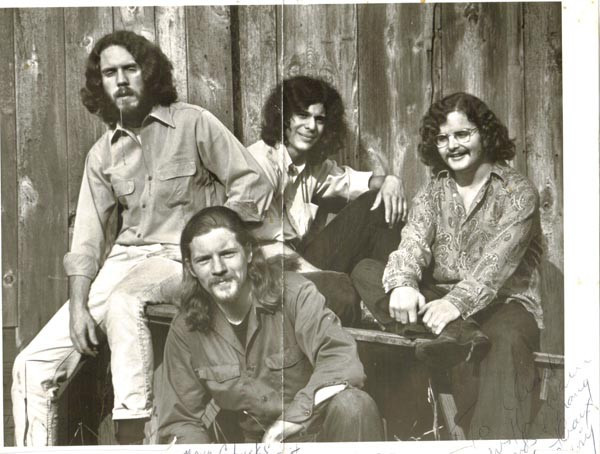
Boffalongo, circa 1970. (Photo courtesy of Sherman Kelly)
King Harvest wasn’t the first to record the song. In 1970, Kelly joined Boffalongo, a band featuring his brother Wells Kelly, guitarist Larry Hoppen, bassist and keyboardist Dave “Doc” Robinson, and Peter Giansante. “Dancing in the Moonlight” appeared on Boffalongo’s 1970 album “Beyond Your Head,” with Sherman Kelly on lead vocals, Wells Kelly on drums, and Larry Hoppen on lead guitar.
Kelly is self-deprecating about his vocal performance on this version.
“The first time I was in a recording studio for that version, we had these producers who thought it was a good idea to give me cocaine. That was probably the worst idea,” Kelly confessed. “I found myself in the vocal booth, where there were a lot of people distracting me. And the producers would give me more cocaine to keep me doing takes until my voice was so distorted and so weird.”
Despite this chaotic recording experience, Boffalongo’s rendition gained regional popularity. Another group, High Broom, also recorded “Dancing in the Moonlight” in 1970, releasing it on Island Records, but it didn’t achieve chart success.
Following Boffalongo’s disbandment, Wells Kelly joined King Harvest, a French-American group then based in Paris, fronted by former Boffalongo member Doc Robinson. Wells Kelly introduced “Dancing in the Moonlight” to the band.
King Harvest’s version, featuring Robinson on lead vocals, was released as a single with “Lady Come Home” as the B-side.
Upon the song’s ascent to hit status, King Harvest invited Sherman Kelly to tour with them in the summer of 1972. During live performances, Robinson handled lead vocals on the song, with Sherman Kelly contributing harmonies.
“Doc had a pretty good voice, better than mine,” Kelly acknowledged. “I remember one critic said about me, ‘As a singer, Sherman Kelly is not too bad of a songwriter.’ That was amusing, and true.”
However, the rigors of touring with King Harvest proved unappealing to Kelly. His tenure with the band lasted only one tour.
“Imagine yourself in your twenties and you’ve written a hit song, you have some chart action and you’re traveling around. It was fun for a while,” he reflected. “But life on the road is ridiculous. I didn’t really care for it after awhile.”
Wells Kelly eventually departed King Harvest and reunited with John Hall. Wells Kelly, Hall, and Harvey Brooks had previously been bandmates in Thunderfrog in the late 1960s. Together with Larry Hoppen from Boffalongo, Wells Kelly and Hall formed Orleans, which also recorded their own version of “Dancing in the Moonlight.” The current iteration of Orleans, still featuring Hall and Larry Hoppen’s brothers, Lance and Lane Hoppen, continues to include “Dancing in the Moonlight” in their setlists. Larry Hoppen passed away in 2012.
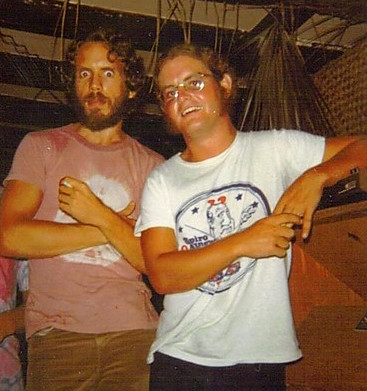
Sherman Kelly, left, and Larry Hoppen, who would go on to form the band Orleans. (Photo courtesy of Sherman Kelly)
Sherman Kelly, a 1967 graduate of Cornell University with degrees in psychology and English, furthered his education at Alliance Francaise in Paris, the University of Lausanne in Switzerland, and the New School for Social Research in New York City, all before penning “Dancing in the Moonlight.”
Following the tragic death of his brother Wells Kelly in 1984, Sherman Kelly found the music industry too painful and pursued other paths. He earned a master’s degree in social work and psychotherapy from Syracuse University in New York and worked as a psychotherapist until his retirement.
In 2008, he released “Burnin’ the Candle,” an album featuring unfinished collaborations with his late brother Wells Kelly.
In 2000, Toploader’s cover of “Dancing in the Moonlight” became another hit for the band, further cementing the song’s enduring appeal. The song has also been featured in numerous films and television programs. In 2017, “Dancing in the Moonlight” appeared in the video game “Guardians of the Galaxy: The Telltale Signs” and served as the opening theme for the second episode.

Sherman Kelly today. (Photo courtesy of Sherman Kelly)

